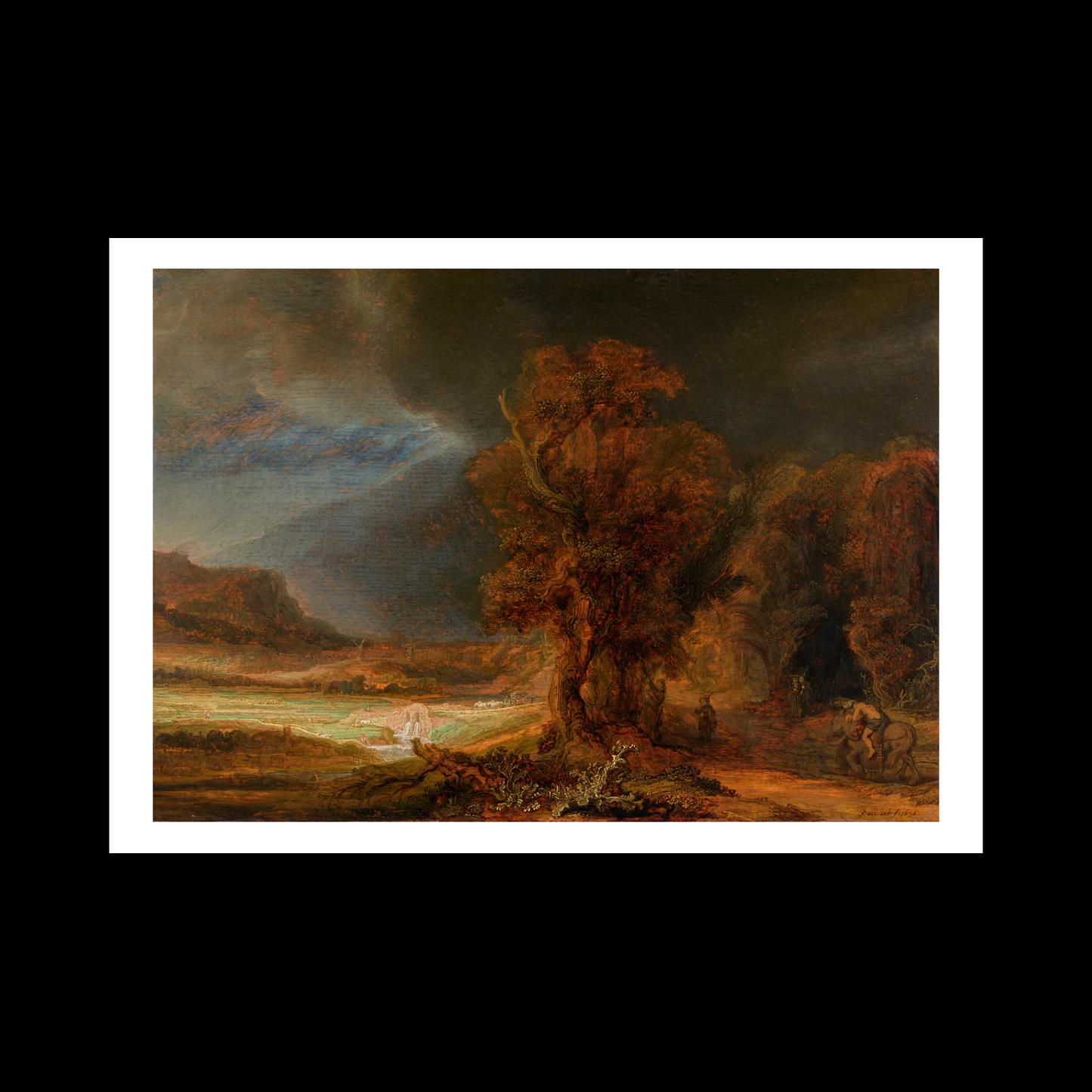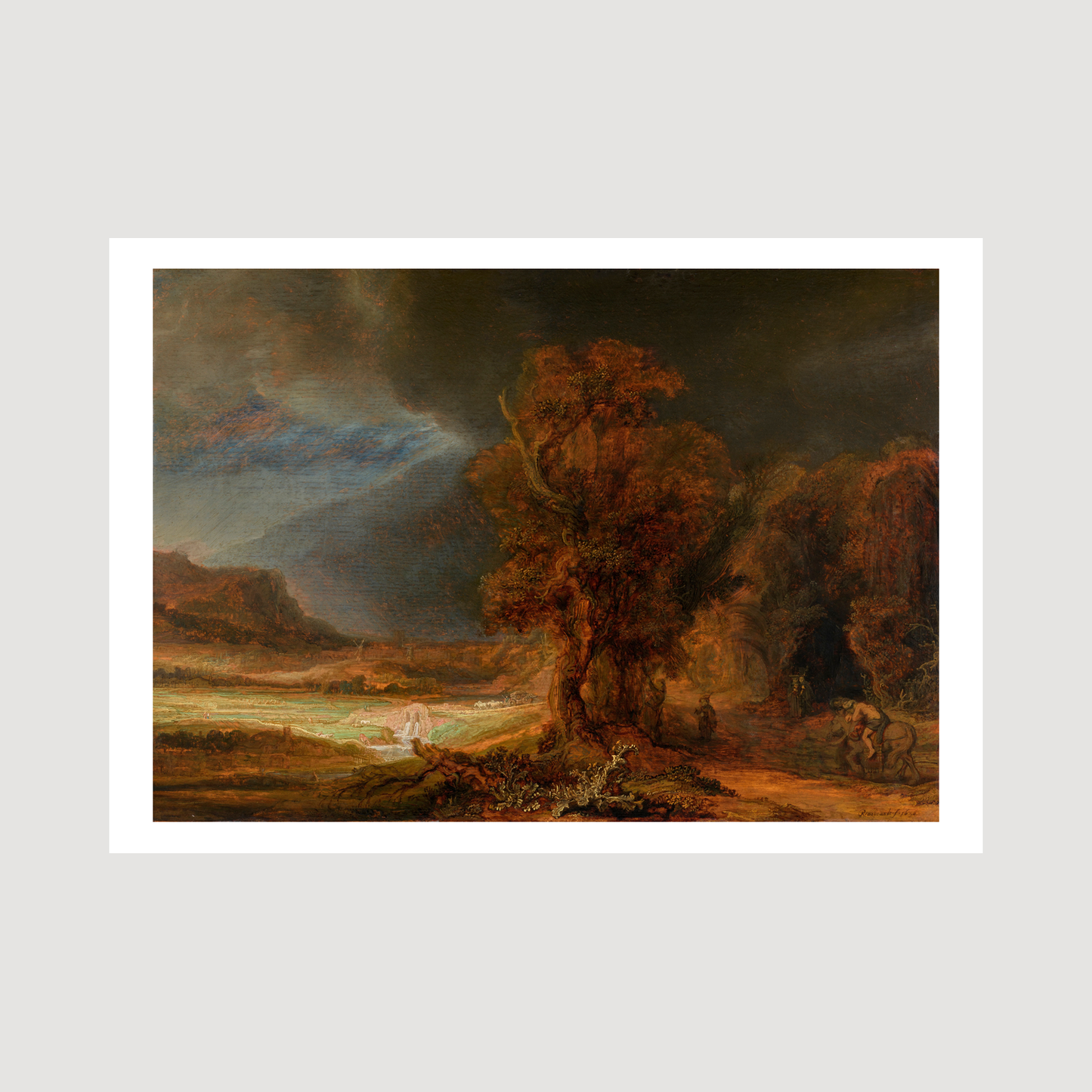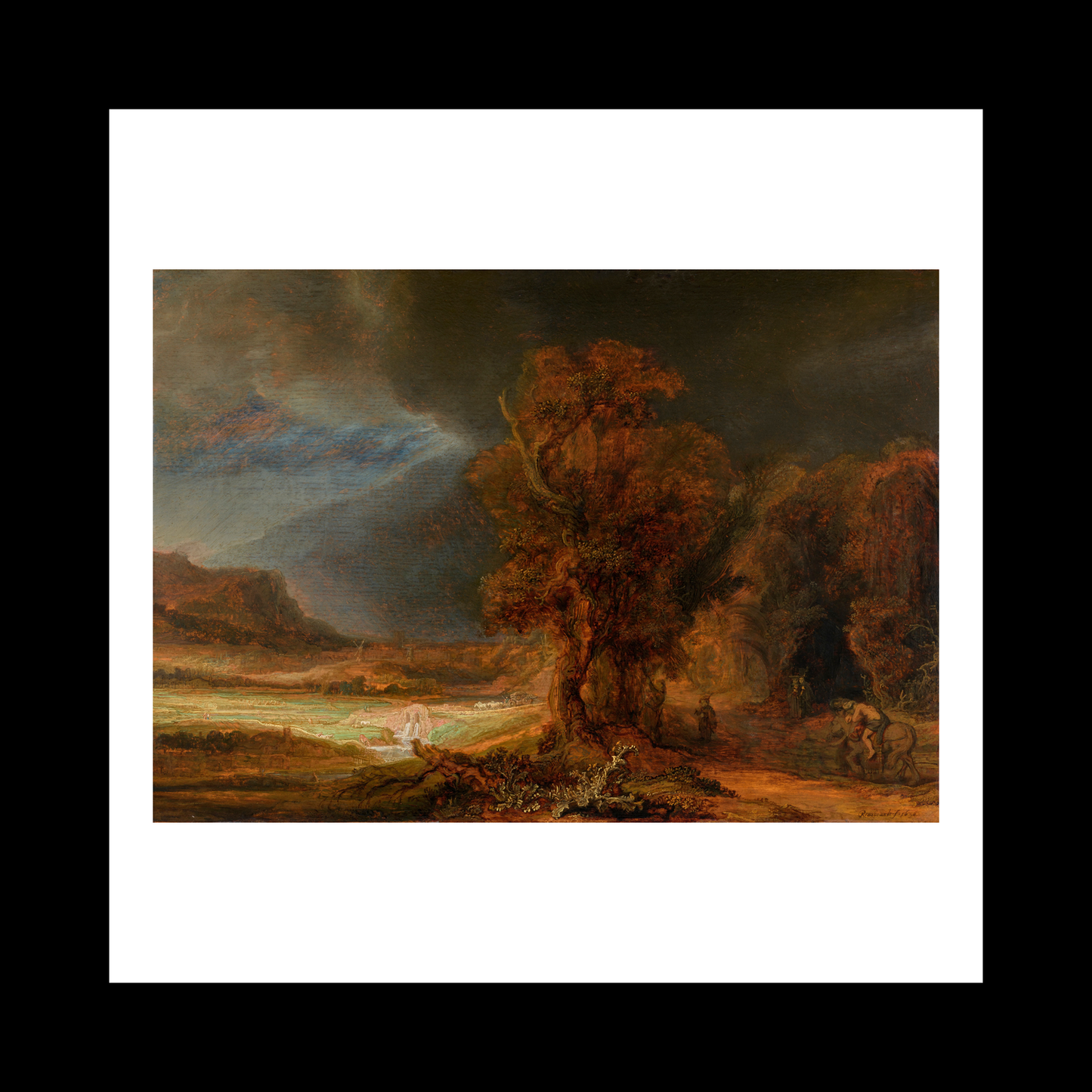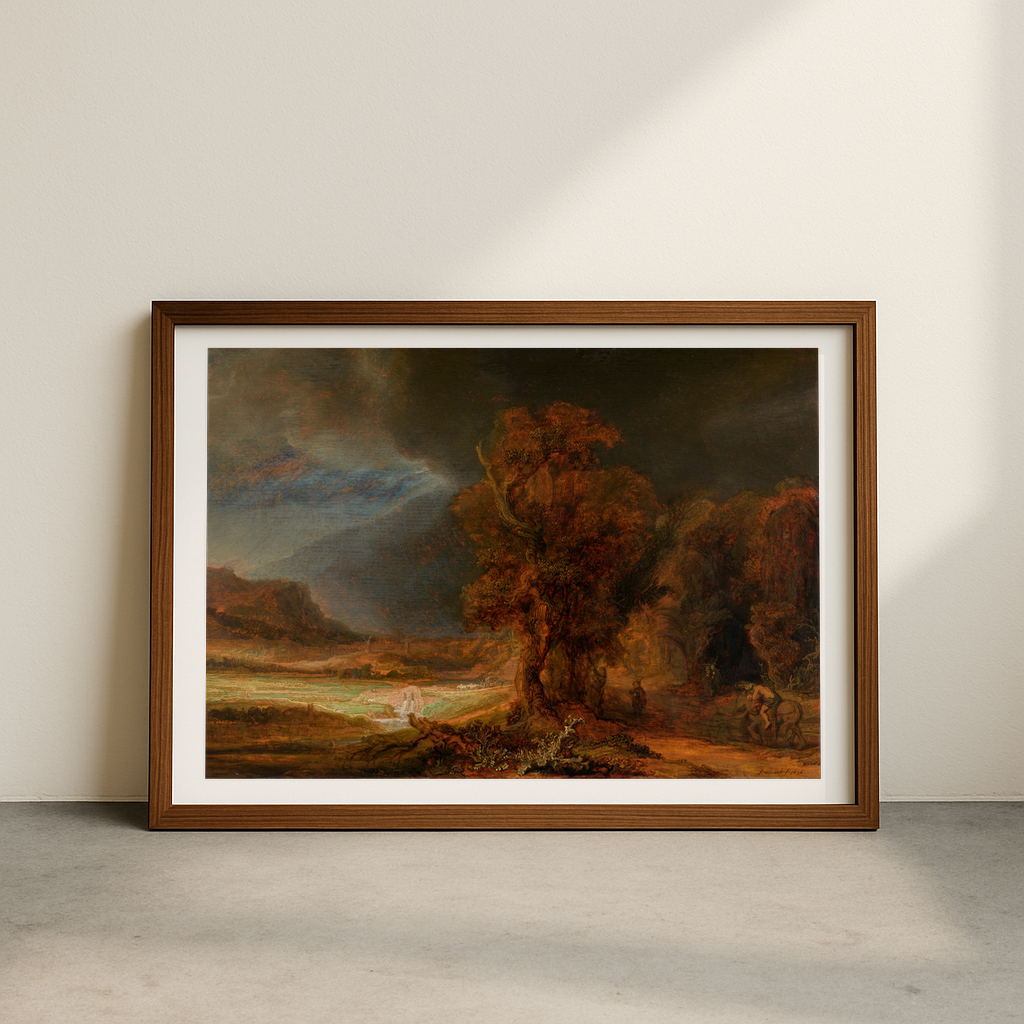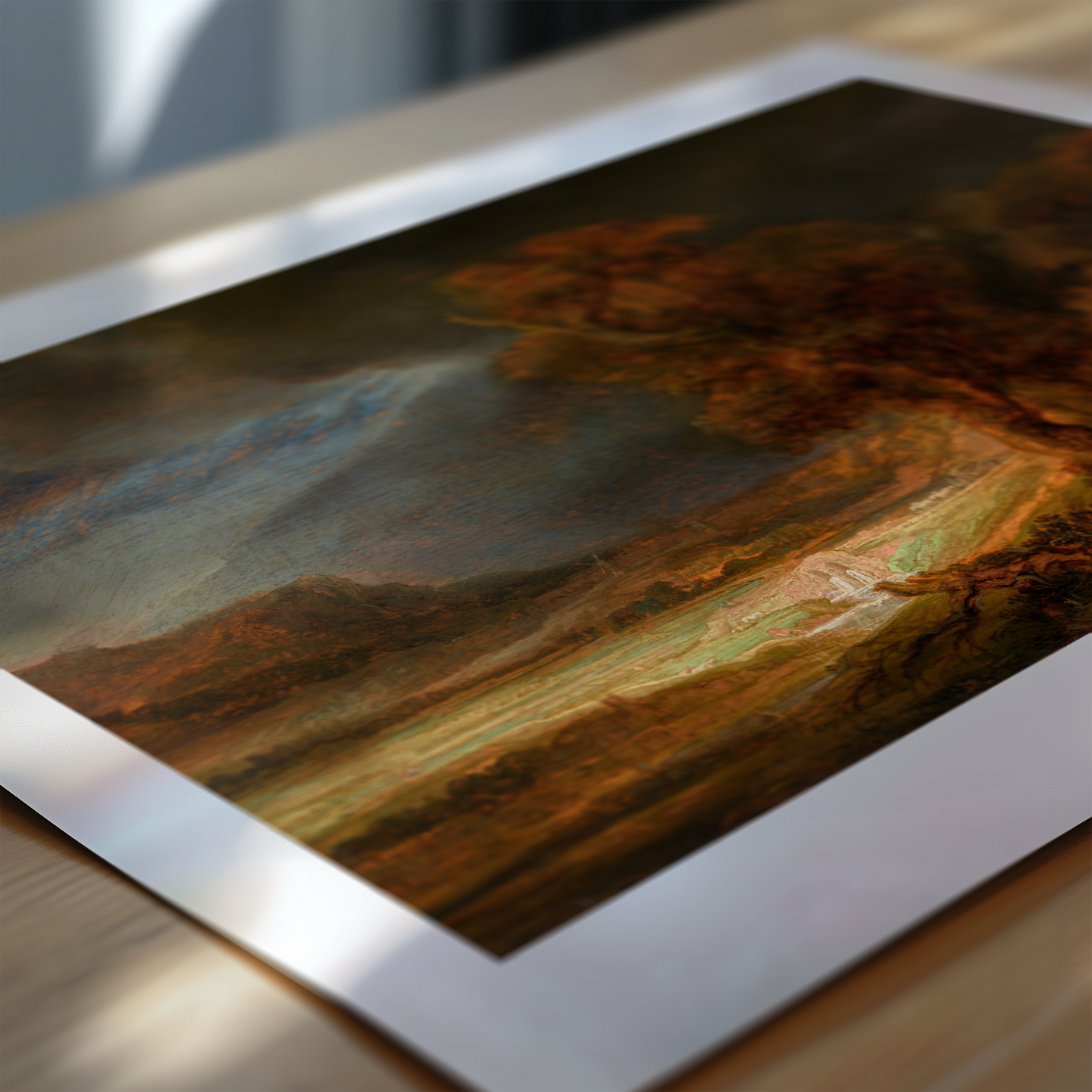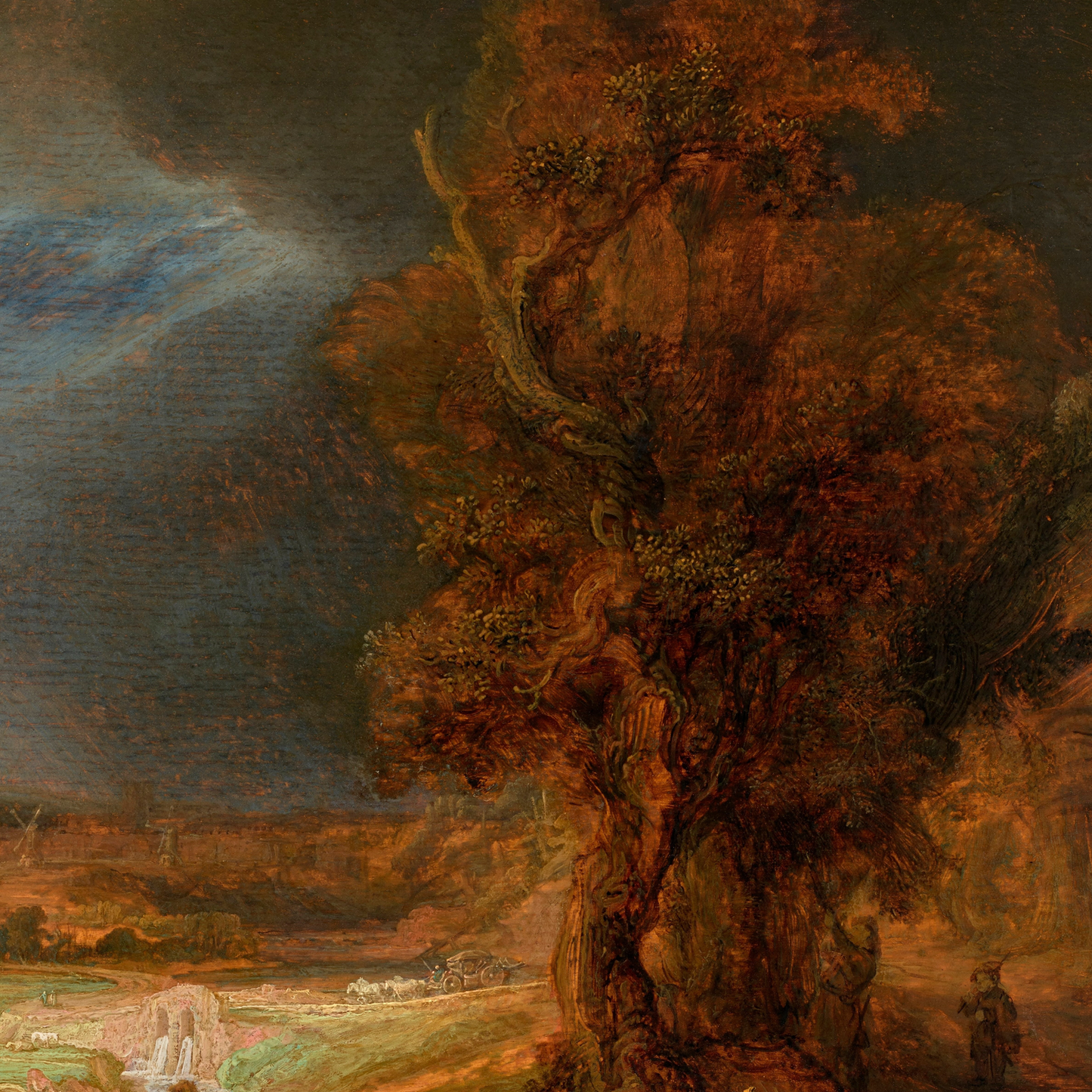1
/
of
6
Landscape with the Good Samaritan (1638)
Landscape with the Good Samaritan (1638)
Regular price
£12.45 GBP
Regular price
Sale price
£12.45 GBP
Taxes included.
Quantity
Couldn't load pickup availability
Rembrandt van Rijn's 'Landscape with the Good Samaritan' (1638) stands as one of the Dutch master's rare yet captivating forays into landscape painting. The work depicts the biblical parable within a dramatically lit woodland scene, where Rembrandt employs his characteristic chiaroscuro technique to create an atmosphere of moral and physical contrast. The painting's focal point shows the Samaritan helping the wounded traveller, though deliberately rendered small within the vast, moody landscape.
The artist's choice to subordinate the biblical narrative to the landscape was revolutionary for its time. Rather than centralising the religious scene, Rembrandt nestles it within a brooding environment of towering trees and rocky outcrops. His distinctive use of impasto technique brings texture to the foliage and earth, while delicate glazes create atmospheric depth in the sky and distant hills. The composition draws viewers through layers of dark and light, guiding the eye from the shadowy foreground to the luminous clearing where the charitable act unfolds.
This work emerged during Amsterdam's Golden Age, when Rembrandt was experimenting with various genres beyond his renowned portraits. The painting reflects both his technical virtuosity and his deep understanding of human nature. Through subtle manipulation of light and shadow, he transforms a simple landscape into a meditation on compassion and moral duty. The work's emotional resonance stems from its ability to make viewers search for the human story within the overwhelming natural world, mirroring how acts of kindness often occur in unexpected places.
Additional context: The Good Samaritan parable was a popular subject in Dutch art, but Rembrandt's interpretation stands apart for its innovative approach to scale and atmospheric effect. His treatment of light filtering through the trees demonstrates his mastery of natural observation, while the painting's composition influenced subsequent generations of landscape artists.
View full details
The artist's choice to subordinate the biblical narrative to the landscape was revolutionary for its time. Rather than centralising the religious scene, Rembrandt nestles it within a brooding environment of towering trees and rocky outcrops. His distinctive use of impasto technique brings texture to the foliage and earth, while delicate glazes create atmospheric depth in the sky and distant hills. The composition draws viewers through layers of dark and light, guiding the eye from the shadowy foreground to the luminous clearing where the charitable act unfolds.
This work emerged during Amsterdam's Golden Age, when Rembrandt was experimenting with various genres beyond his renowned portraits. The painting reflects both his technical virtuosity and his deep understanding of human nature. Through subtle manipulation of light and shadow, he transforms a simple landscape into a meditation on compassion and moral duty. The work's emotional resonance stems from its ability to make viewers search for the human story within the overwhelming natural world, mirroring how acts of kindness often occur in unexpected places.
Additional context: The Good Samaritan parable was a popular subject in Dutch art, but Rembrandt's interpretation stands apart for its innovative approach to scale and atmospheric effect. His treatment of light filtering through the trees demonstrates his mastery of natural observation, while the painting's composition influenced subsequent generations of landscape artists.
